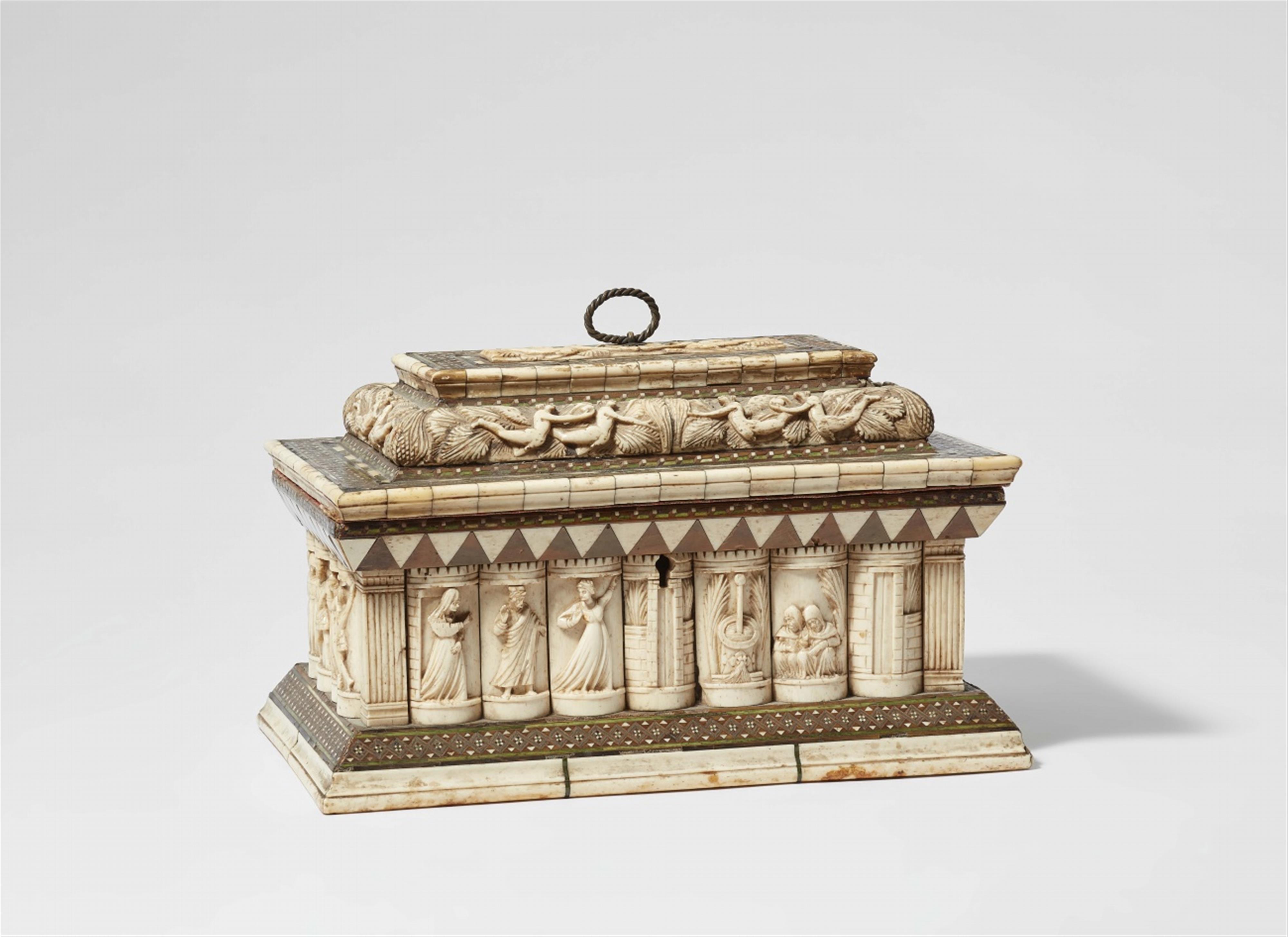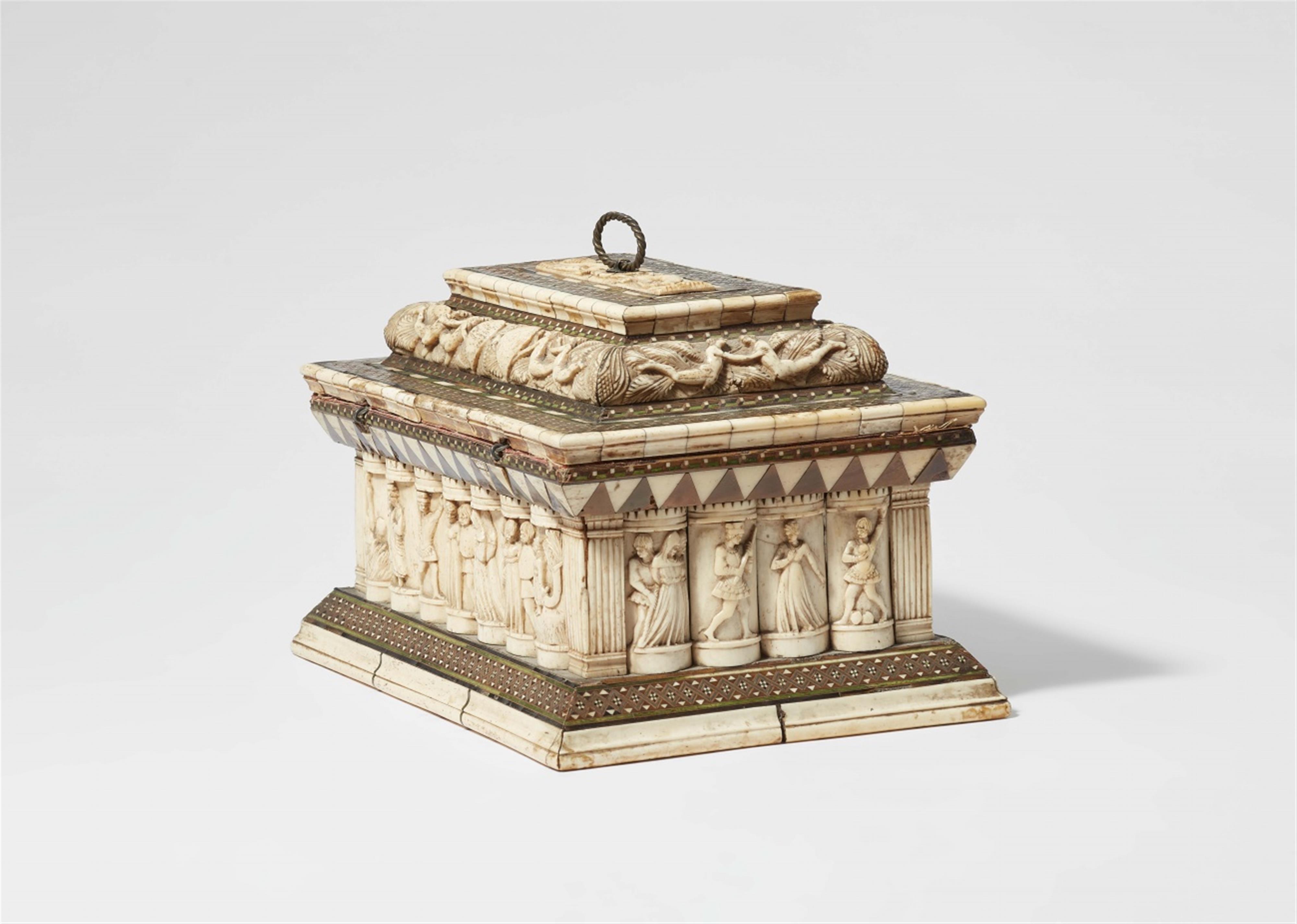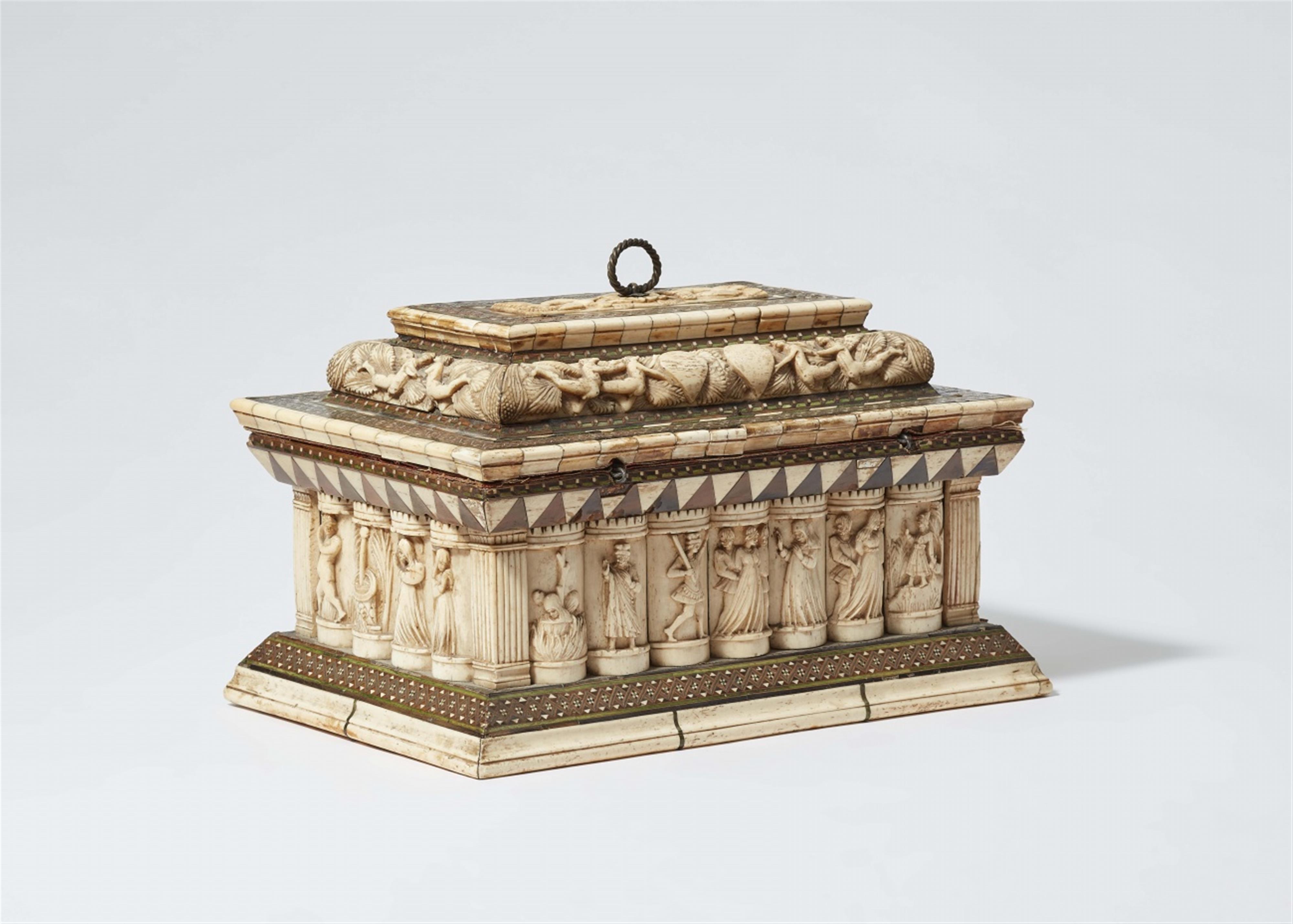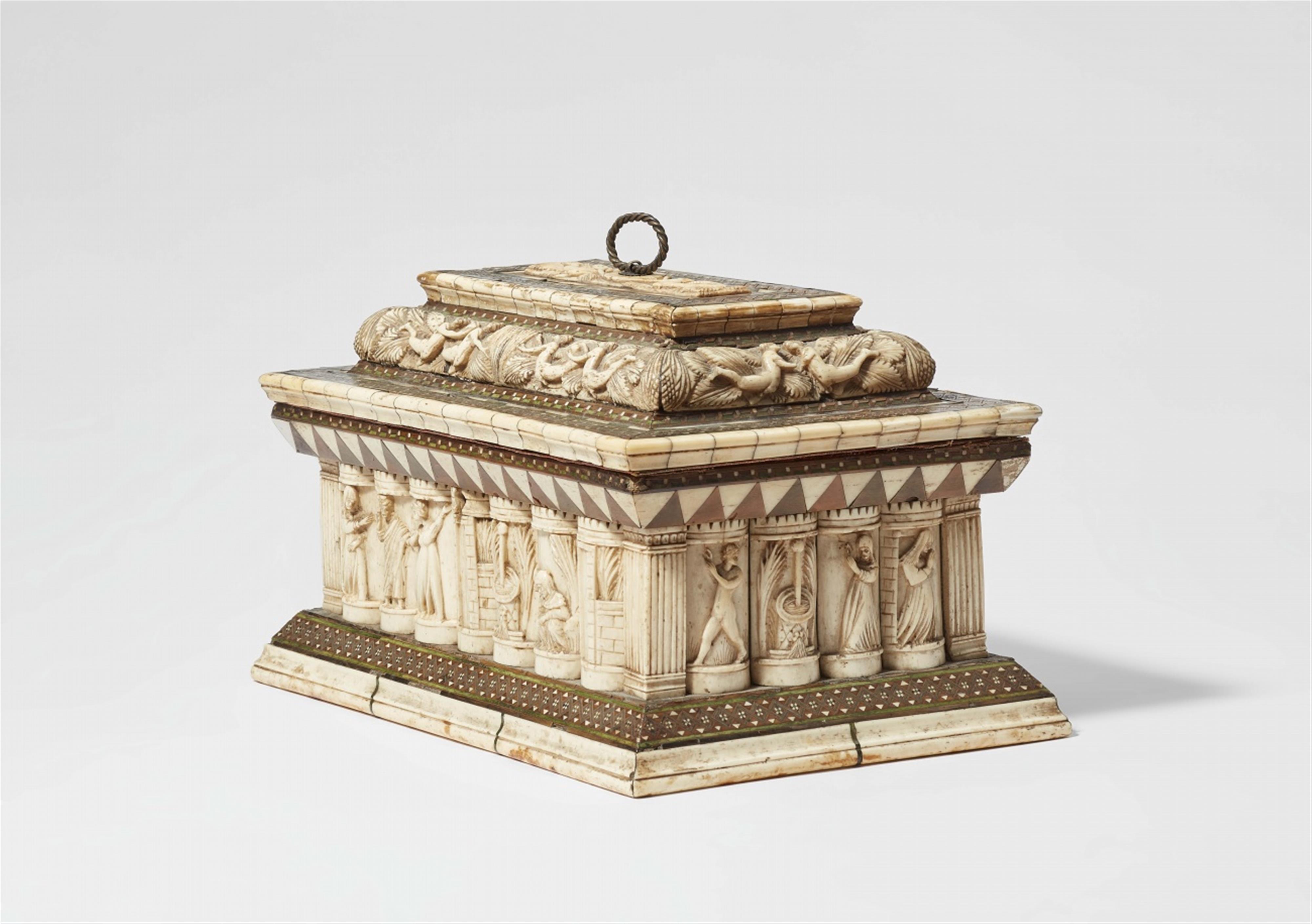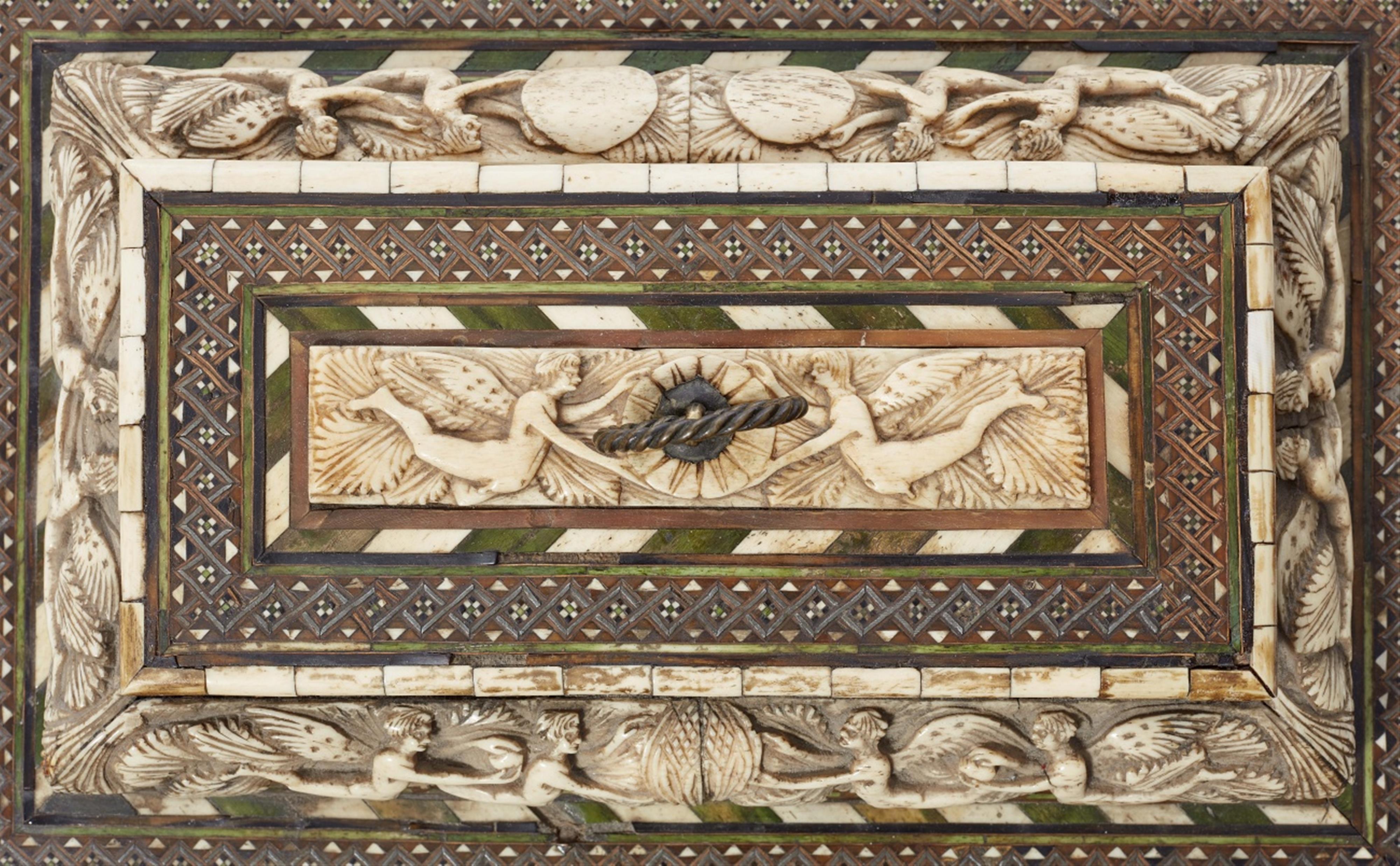A Certosina inlay casket with Susanne in her bath
Oblong box with protruding base and gable beneath a tiered lid. Decorated with partially dyed bone appliques on a partially polychrome softwood core with wrought iron and bronze mountings and a modern textile interior. Further motifs are a fountain of youth and a depiction of a stoning. The lock missing. H 20.7, W 34.7, D 32 cm.
Northern Italy (probably Venice), attributed to the Bottega degli Embriachi, circa 1420 – 40.
This casket, made in Italy, probably in Venice, around 1420-1440, is decorated with inlays "alla certosina" and carved bone plaques. The Old Testament story of Susanna as an example of female virtue and chastity was excellently suited as a wedding gift. Therefore, most of these boxes were produced and gifted for such occasions.The vertically cut and halved bone plates allow only for very narrow images, and illustrate the episode rather schematically. It can be assumed that the story was well known to the recipients of the gift and thus only quotes from the narrative were needed to visualise the content and teaching. The Embriachi were a northern Italian family of entrepreneurs and carvers. The exact location of their workshop is not known, only that they began working in Florence and that by around 1431 they also ran a further studio in Venice. The Embriachi employed local workers who specialised in "certosina" (inlay work of stained woods, bone and horn). In addition to altarpieces, the bottega specialised in bridal caskets such as this one, which were intended to hold jewellery or documents and decorated with biblical or mythological scenes. The group of caskets to which the present example belongs may have been made in this workshop in the years before its final dissolution in 1433. However, there were also local imitators who used the Susanna caskets of the Embriachi as models for their own productions. Thus, it would be equally possible that this casket comes from a subsequent workshop.
Provenance
Private ownership, Rhineland, acquired at the Mostra Nazionale dell´Antiquariato in Assisi 1984 from Ennio and Piero Riccardi.
Literature
A further very similar box is housed in the Victoria & Albert Museum London, acc.no. 4718:2-1859.

